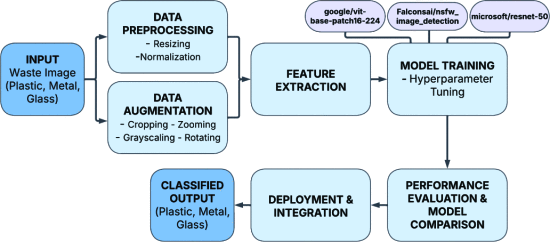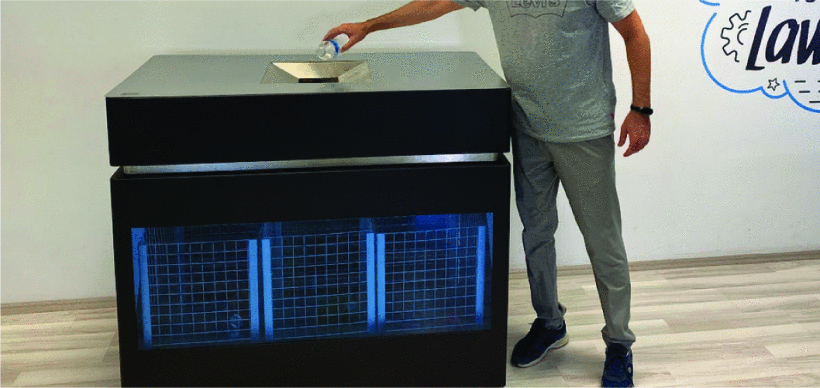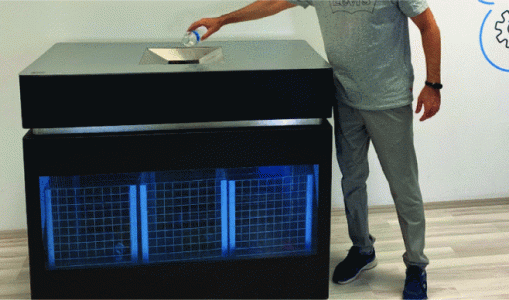Benchmarking Deep Learning Models For Automated Waste Classification
Recycling is a cornerstone of sustainable development, yet traditional waste sorting methods remain manual, error-prone, and inefficient, limiting recovery rates and driving up processing costs. To address these challenges, this study benchmarks deep learning models for automated waste classification, focusing on the accurate recognition of glass, cans, and plastic through image-based detection.
We construct a custom dataset of 689 high-resolution images, collected under varying lighting conditions and augmented to improve robustness against real-world variability. Three state-of-the-art models are evaluated: google/vit-base-patch16-224 (Vision Transformer), Falconsai/nsfw (ViT-based), and microsoft/resnet-50 (CNN-based). The models are compared across key performance metrics including accuracy, precision, recall, and F1-score.
Results demonstrate that ViT-Base achieves the highest classification accuracy at 97.62% with only 6 epochs, significantly outperforming ResNet-50 (90.48%, 30 epochs) and surpassing Falcon-NSFW (95.24%). This highlights the superior capability of Vision Transformers in learning complex visual features for waste classification tasks. Confusion matrix analysis further confirms their effectiveness across all categories, ensuring high precision in differentiating between recyclable materials.
The proposed system not only improves sorting accuracy and operational efficiency, but also supports scalable integration into smart recycling infrastructures. Future deployment involves implementing the ViT-based classifier on Raspberry Pi 5 with a servo-driven sorting mechanism, enabling real-time automated separation in recycling facilities and smart bins. Additional enhancements include sensor fusion with capacitive proximity sensors, federated learning for adaptability, and IoT-enabled communication protocols (A3L-FEC-FSFB, ACP/ACP+) for reliable edge-to-cloud integration.
This work bridges the gap between AI research and practical waste management, paving the way for intelligent, low-cost, and energy-efficient recycling systems. By leveraging deep learning and edge computing, the study advances circular economy practices while contributing to sustainable urban development.



